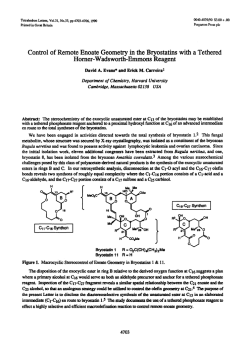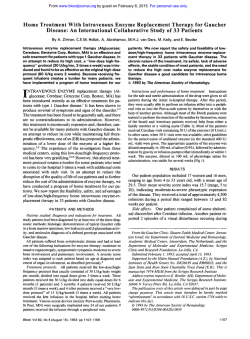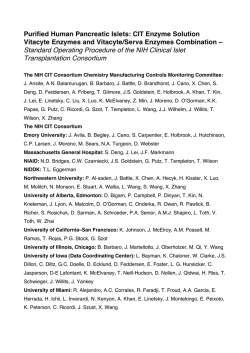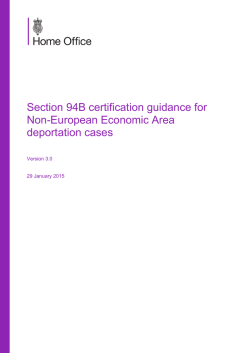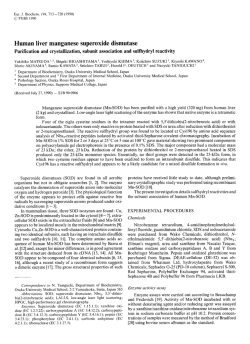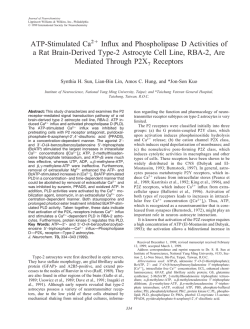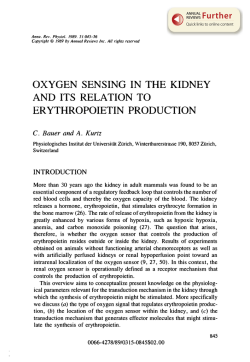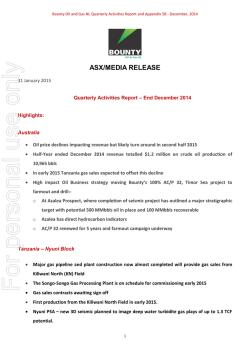
Chem 160b Metabolism handout
Glycolysis Stage I: Energy Investment Reaction 1: OPO32- OH ATP ADP O O HO HO Hexokinase HO OH HO OH OH OH Glucose Glucose-6-Phosphate Reaction Type/Enzyme Class: Cofactors/Coenzymes: ΔG˚' (reversible/irreversible?): Energy Input/Output (ATP equiv.): Purpose of reaction: Regulation (if yes, how?): 1 2-O OPO32- Reaction 2: 3PO OH O HO O HO HO Phosphoglucose isomerase OH OH OH OH Glucose-6-Phosphate Fructose 6-Phosphate Reaction Type/Enzyme Class: Cofactors/Coenzymes: ΔG˚' (reversible/irreversible?): Energy Input/Output (ATP equiv.): Purpose of reaction: Regulation (if yes, how?): 2 Reaction 3: 2-O 3PO OH O ATP ADP 2-O 3PO OPO32- O HO HO OH Phosphofructokinase (PFK-1) OH OH OH Fructose 6-Phosphate Fructose 1,6-Bisphosphate Reaction Type/Enzyme Class: Cofactors/Coenzymes: ΔG˚' (reversible/irreversible?): Energy Input/Output (ATP equiv.): Purpose of reaction: Regulation (if yes, how?): 3 Reaction 4: 2-O 3PO OPO32- O O OPO32- H HO O OH Aldolase OH + OH OPO32- OH Dihydroxyacetone Phosphate (DHAP) Fructose 1,6-Bisphosphate Reaction Type/Enzyme Class: Cofactors/Coenzymes: ΔG˚' (reversible/irreversible?): Energy Input/Output (ATP equiv.): Purpose of reaction: Regulation (if yes, how?): 4 Glyceraldehyde 3-Phosphate Reaction 5: O OPO32- H O OH Triose Phosphate Isomerase OH OPO32- Dihydroxyacetone Phosphate (DHAP) Glyceraldehyde 3-Phosphate Reaction Type/Enzyme Class: Cofactors/Coenzymes: ΔG˚' (reversible/irreversible?): Energy Input/Output (ATP equiv.): Purpose of reaction: Regulation (if yes, how?): Stage II: Energy Recapture From this point forward, there are TWO molecules reacting at each step (as derived from glucose). Reaction 6: O H Pi + NAD+ OH OPO32- NADH + H+ Glyceraldehyde-3Phosphate Dehydrogenase Glyceraldehyde 3-Phosphate O O PO32- OH OPO32- Glycerate-1,3-Bisphosphate Reaction Type/Enzyme Class: Cofactors/Coenzymes: ΔG˚' (reversible/irreversible?): Energy Input/Output (ATP equiv.): Purpose of reaction: Regulation (if yes, how?): 5 Reaction 7: O PO32- O OH ADP ATP O- O Phosphoglycerate Kinase OH OPO32- OPO32- Glycerate-1,3-Bisphosphate 3-Phosphoglycerate Reaction Type/Enzyme Class: Cofactors/Coenzymes: ΔG˚' (reversible/irreversible?): Energy Input/Output (ATP equiv.): Purpose of reaction: Regulation (if yes, how?): Reaction 8: O O- OH OPO32- O Phosphoglycerate Mutase O- OPO32OH 3-Phosphoglycerate 2-Phosphoglycerate Reaction Type/Enzyme Class: Cofactors/Coenzymes: ΔG˚' (reversible/irreversible?): Energy Input/Output (ATP equiv.): Purpose of reaction: Regulation (if yes, how?): 6 Reaction 9: O O O- OPO32- Enolase O- OPO32- OH 2-Phosphoglycerate Phosphoenolpyruvate (PEP) Reaction Type/Enzyme Class: Cofactors/Coenzymes: ΔG˚' (reversible/irreversible?): Energy Input/Output (ATP equiv.): Purpose of reaction: Regulation (if yes, how?): 7 + H2O Reaction 10: O O- O ADP OPO32- ATP Pyruvate Kinase Phosphoenolpyruvate (PEP) O- O Pyruvate Reaction Type/Enzyme Class: Cofactors/Coenzymes: ΔG˚' (reversible/irreversible?): Energy Input/Output (ATP equiv.): Purpose of reaction: Regulation (if yes, how?): 8 Gluconeogenesis-Bypass Reactions Bypass I: Reaction 1: O- O Pi + H+ ADP H2O ATP O O O- Pyruvate Carboxylase O CH2 Pyruvate -O O Oxaloacetate (OAA) Reaction Type/Enzyme Class: Cofactors/Coenzymes: ΔG˚' (reversible/irreversible?): Energy Input/Output (ATP equiv.): Purpose of reaction: Location: Regulation (if yes, how?): 9 Reaction 2: O- O GTP CO2 + GDP O- O O OPO32- PEP Carboxykinase CH2 -O O Oxaloacetate (OAA) PEP Reaction Type/Enzyme Class: Cofactors/Coenzymes: ΔG˚' (reversible/irreversible?): Energy Input/Output (ATP equiv.): Purpose of reaction: Location: Regulation (if yes, how?): 10 Bypass II: 2-O 3PO 2-O OPO32- O H2O HO 3PO Pi HO Fructose 1,6-Bisphosphatase (F1,6-BPase) OH OH O OH OH OH Fructose 1,6-Bisphosphate Reaction Type/Enzyme Class: Cofactors/Coenzymes: ΔG˚' (reversible/irreversible?): Energy Input/Output (ATP equiv.): Purpose of reaction: Regulation (if yes, how?): 11 Fructose 6-Phosphate Bypass III: OH OPO32- H2O O HO HO Pi Glucose-6-phosphatase O HO HO OH OH OH OH Glucose-6-Phosphate Reaction Type/Enzyme Class: Cofactors/Coenzymes: ΔG˚' (reversible/irreversible?): Energy Input/Output (ATP equiv.): Purpose of reaction: Location: Regulation (if yes, how?): 12 Glucose Glycogenesis OPO32- OH Reaction 1: ATP ADP O O HO HO Hexokinase HO HO OH OH OH OH Glucose Reaction 2: Glucose-6-Phosphate OPO32- OPO32- O O HO HO HO HO Phosphoglucomutase OH OH OPO32- OH Glucose-6-Phosphate Glucose-1,6-Bisphosphate OH O HO HO Phosphoglucomutase OH OPO32- Glucose-1-Phosphate Reaction Type/Enzyme Class: Cofactors/Coenzymes: ΔG˚' (reversible/irreversible?): Energy Input/Output (ATP equiv.): Purpose of reaction: Regulation (if yes, how?): 13 OH Reaction 3: OH UTP O PPi HO O HO HO UDP-Glucose Phosphorylase OH HO OH OPO32- O -O Glucose-1-Phosphate P O O -O P O UDP-Glucose Reaction Type/Enzyme Class: Cofactors/Coenzymes: ΔG˚' (reversible/irreversible?): Energy Input/Output (ATP equiv.): Purpose of reaction: Regulation (if yes, how?): 14 O Uridine Reaction 4: 6 6 UDP-Glucose Glycogenin Primer Growing glycogen chain UDP Glycogen Synthase Reaction Type/Enzyme Class: Cofactors/Coenzymes: ΔG˚' (reversible/irreversible?): Energy Input/Output (ATP equiv.): Purpose of reaction: Regulation (if yes, how?): 15 Glycogenin Reaction 5: n Growing glycogen chain Branching Enzyme Glycogenin n Branched glycogen chain Glycogenin Reaction Type/Enzyme Class: Cofactors/Coenzymes: ΔG˚' (reversible/irreversible?): Energy Input/Output (ATP equiv.): Purpose of reaction: Regulation (if yes, how?): 16 Citric Acid Cycle Reaction 1: * CO O- O 2 * O O H2O + CH2 H3C * S * Acetyl CoA -O CoASH Citrate Synthase CH2 -O O Oxaloacetate (OAA) CO2- HO CoA O Citrate Reaction Type/Enzyme Class: Cofactors/Coenzymes: ΔG˚' (reversible/irreversible?): Energy Input/Output (ATP equiv.): Purpose of reaction: Regulation (if yes, how?): 17 + H+ * CO Reaction 2: * CO 2 * * H2O CO2- HO 2 CO2- CO2- H Aconitase CH2 -O H CO2- 2C OH H O Citrate cis-Aconitate Reaction Type/Enzyme Class: Cofactors/Coenzymes: ΔG˚' (reversible/irreversible?): Energy Input/Output (ATP equiv.): Purpose of reaction: Regulation (if yes, how?): 18 2 * H2O Aconitase -O * CO Isocitrate * CO Reaction 3: 2 * CO * NAD+ CO2- H -O 2C OH NADH + H+ * H+ CO2- Isocitrate Dehydrogenase O H CO2- Isocitrate Oxalosuccinate Reaction Type/Enzyme Class: Cofactors/Coenzymes: ΔG˚' (reversible/irreversible?): Energy Input/Output (ATP equiv.): Purpose of reaction: Regulation (if yes, how?): 19 * CO 2 2 * CO2 Isocitrate Dehydrogenase CH2 O CO2- α-Ketoglutarate * CO Reaction 4: * CO 2 * NAD+ NADH + H+ CH2 2 * CH2 O CO2- CoASH CO2 α-Ketoglutarate Dehydrogenase α-Ketoglutarate O SCoA Succinyl-CoA Reaction Type/Enzyme Class: Cofactors/Coenzymes: ΔG˚' (reversible/irreversible?): Energy Input/Output (ATP equiv.): Purpose of reaction: Regulation (if yes, how?): 20 * CO Reaction 5: 2 GDP + Pi * GTP + CoASH * CO * CH2 O 2 Succinyl CoA Synthase * CO2* SCoA Succinyl-CoA Succinate Reaction Type/Enzyme Class: Cofactors/Coenzymes: ΔG˚' (reversible/irreversible?): Energy Input/Output (ATP equiv.): Purpose of reaction: Regulation (if yes, how?): * CO Reaction 6: 2 - * * CO2* FAD * -O * 2C * H Fumarate Succinate Reaction Type/Enzyme Class: Cofactors/Coenzymes: ΔG˚' (reversible/irreversible?): Energy Input/Output (ATP equiv.): Purpose of reaction: Location: Regulation (if yes, how?): FADH2 Succinate Dehydrogenase * CO2 H 21 Reaction 7: * CO2 H * CO2- H2O * -O HO * * 2C Fumarase * H * H CO2* Fumarate Malate Reaction Type/Enzyme Class: Cofactors/Coenzymes: ΔG˚' (reversible/irreversible?): Energy Input/Output (ATP equiv.): Purpose of reaction: Regulation (if yes, how?): O * CO2- Reaction 8: * HO O- NADH NAD+ + H+ H O Malate Dehydrogenase * CH2 CO2* -O Malate O Oxaloacetate (OAA) Reaction Type/Enzyme Class: Cofactors/Coenzymes: ΔG˚' (reversible/irreversible?): Energy Input/Output (ATP equiv.): Purpose of reaction: Regulation (if yes, how?): 22 Additional Study Questions for Chapters 8 and 9 1. Why must NADH produced in glycolysis be oxidized to regenerate NAD+, regardless of whether the system as a whole is aerobic or anaerobic? 2. How would a low concentration of Mg+2 in red blood cells affect the rate of glycolysis? Why? 3. A thiamine deficiency would have what effect on the activity of pyruvate dehydrogenase? 4. In mitochondria supplied with pyruvate, which of the following conditions would give maximal CAC activity? Why? High [ADP], high [NADH], high [acetyl CoA] High [ATP], low [NAD], high [acetyl CoA] High [ADP], high [NAD], low [acetyl CoA] High [ADP], high [NAD], high [acetyl CoA] 5. Briefly describe the biological rationale for each of the following allosteric regulation events: a. activation of pyruvate carboxylase by acetyl CoA b. activation of pyruvate dehydrogenase kinase by NADH c. inhibition of isocitrate dehydrogenase by ATP d. activation of isocitrate dehydrogenase by ADP e. inhibition of α-ketoglutarate dehydrogenase complex by succinyl CoA f. activation of pyruvate dehydrogenase complex by AMP 6. Compare the ratios of NADH/NAD+ and ATP/ADP in heart muscle during periods of sleep and jogging. 7. AMP serves as an activator of the pyruvate dehydrogenase complex. Why is this metabolically desirable? 8. Succinyl CoA and citrate both inhibit the enzymes involved in their own synthesis. Name this type of inhibition. 9. None of the reactants of the citric acid cycle requires oxygen as a reactant. Why, then, does the citric acid cycle constitute an aerobic pathway? 10. In response to low levels of glucose in the blood, the pancreas produces glucagon which triggers the adenylyl cyclase signaling pathway in liver cells. As a result, flux through glycolysis slows. Why is it advantageous for glycolysis to decrease in the liver in response to low blood glucose levels? 11. In three separate experiments, pyruvate labeled with 14C at C-1, C-2, or C-3 is metabolized via the pyruvate dehydrogenase complex and the CAC. Which labeled pyruvate yields the first 14C? Which yields the last? 12. What are the functions of each of the 5 coenzymes utilized in the pyruvate dehydrogenase and α-ketoglutarate dehydrogenase complexes? 23 13. Explain why the reaction catalyzed by PFK-1 is the main regulatory site for glycolysis and not the reaction catalyzed by hexokinase that occurs earlier in the pathway. 14. How is the activity of PFK-1 regulated? 15. Explain why fructose 1,6-bisphosphate stimulates pyruvate kinase. What kind of activation does this represent? 16. Explain the necessity of glycogen being a highly branched, rather than a linear polysaccharide. 17. Why is it important that the enzymes that catalyze the regulatory steps of glycolysis and gluconeogenesis not be catalyzed by the same enzymes, yet have the same reactants/products? 18. If pyruvate carboxylase is in the mitochondria and the next enzyme in the process, PEP carboxykinase is in the cytosol, how is it possible for the product of pyruvate carboxylase, oxaloacetate to get to PEP carboxykinase if it cannot cross the mitochondrial membrane? 19. Explain how PEP, succinyl CoA, and glycerate 1,3-bisphosphate constitute molecules with high phosphate transfer potential? 20. What is the purpose of converting glucose 1-phosphate to UDP-glucose in glycogenesis? 24
© Copyright 2026
